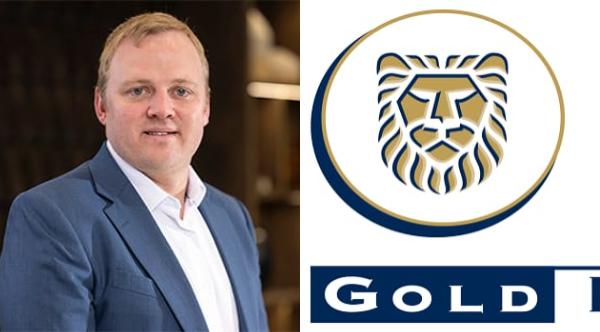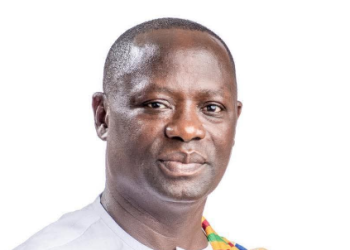Gold Fields Limited has declared that the current favourable gold prices environment presents a once-in-a-generation opportunity to reinvest in its assets, strengthen its balance sheet, and position itself for another century of growth.
The company, which has been in existence for 138 years, says its strategy is to leverage high gold prices not only for immediate profitability but also to ensure sustainable operations through prudent capital allocation, operational efficiency, and investments in future growth.
Executive Vice-President for Strategy, Planning and Corporate Development, Chris Gratias, underscored this vision during a virtual media engagement following the release of the company’s first-half 2025 results.
Reinvesting in core assets
According to Gratias, the focus is to channel a significant portion of resources back into existing operations, especially at the Tarkwa mine in Ghana, where a lease renewal application is being backed by substantial reinvestments.
“This is the best time to do it because it allows Gold Fields to significantly reshape the business, make it more efficient and more productive through extending mine life, reducing costs, and ultimately strengthening profitability,” he explained.
He noted that the strategy is not limited to Tarkwa but applies across the group’s global asset base, with each mine being evaluated for opportunities to extend life, enhance productivity, and reduce costs.
This reinvestment, he said, ensures the company can withstand potential downturns when gold prices retreat.
Balancing growth and shareholder returns
Gratias stressed that while reinvestments and expansions are necessary, they must be balanced with shareholder expectations for returns.
“When we think about capital allocation, it’s that kind of fine balance we’re trying to thread between investing in our business, adding reserves through exploration and acquisitions, and returning money to shareholders,” he said.
This balancing act includes strengthening systems, simplifying organizational processes, and embedding efficiency in all aspects of the business, from exploration to operations.
CFO outlines capital allocation priorities
Chief Financial Officer (CFO), Alex Dall, provided more details of the company’s capital allocation framework, which he said rests on three core principles.
The first is to maintain an investment-grade credit rating, giving Gold Fields balance sheet flexibility to pursue growth opportunities.
The second is to spend capital required to ensure safe, reliable, and cost-effective operations.
The third is a firm commitment to pay a base dividend of 30 to 45% of normalized earnings.
“This gold price environment creates significant remaining cash flow, and that cash must compete based on returns,” Dall explained, adding: “That’s really where this tension comes. We have to get this balance right.”
ESG and growth investments
Dall pointed to examples of discretionary growth investments, including environmental, social, and governance (ESG) initiatives such as a microgrid project in Australia.
These projects, he said, complement internal mine-life extensions and acquisitions that add reserves and extend the company’s portfolio.
He highlighted that acquisitions like Cisco and Gold Red, both expected to close by the end of the year, are being financed on balance sheet.
This, however, requires careful use of cash flow to pay down debt while simultaneously funding future growth.
Taxes, communities, and local procurement
Gratias also emphasized that the benefits of higher gold prices extend beyond shareholders.
In the first half of 2025 alone, Gold Fields paid $460 million in taxes and royalties, more than double the figure in the same period of 2024.
Local procurement has also been prioritized, with a strong focus on sourcing from host communities and creating value for local economies.
“It is really difficult to meet all the expectations of local communities,” Gratias admitted, “but we are committed to ensuring that the value we create is broadly shared.”
A delicate balance
Both executives acknowledged that the current period is critical for Gold Fields.
High gold prices offer a window to strengthen its asset base, build resilience, and simplify its operations.
Yet, the company must also satisfy shareholders with returns, reduce debt, and invest in ESG initiatives while responding to the needs of host communities.
As Gratias put it, “For a company that has been around for 138 years, the goal is to make sure we remain relevant and profitable for the next hundred years. That requires value-accretive investments, balance, and a commitment to all stakeholders.”
Gold Fields reported a remarkable surge in profitability for the first half of 2025, with earnings more than tripling year-on-year, buoyed by record gold prices and operational improvements across its global portfolio.
The group’s headline earnings rose sharply to $1.027 billion in the six months to June 30, compared with $320.7 million during the same period last year—representing a 220% jump.
The robust performance enabled the Johannesburg-listed miner to raise its interim dividend by 133%, from 300 cents per share in the first half of 2024 to 700 cents (R7.00) in the current reporting period.
Record bullion prices drive gains
Gold Fields realized an average gold price of $3,281 per ounce in the first half 2025, a 40% increase from a year ago, as global economic uncertainty and weakening confidence in the U.S. dollar fuelled investor appetite for the safe-haven metal.
This price rally, combined with stronger production, drove adjusted free cash flow to $952 million, a dramatic turnaround from a $58 million outflow in the first half of 2024.
Production surge boosts output
Group attributable production rose 24% year-on-year to 1.136 million ounces, supported by contributions from operations in South Africa, Chile, Peru, and Australia.
Notably, the company’s new Salares Norte mine in Chile produced 123,600 gold-equivalent ounces in the first half, with the second quarter alone delivering 73,000 ounces—a 46% increase from the prior quarter.
The mine is expected to achieve commercial production in the third quarter 2025, with annual output projected at 325,000–375,000 ounces this year and a full steady-state production of 550,000–580,000 ounces by 2026.
All-in sustaining costs (AISC) for first half 2025 fell 4% to $1,682 per ounce, down from the prior year’s levels.
Sustaining capital expenditure for 2025 is expected to remain within $940 million to $970 million, enabling the group to balance expansion with cost control.
Dividend policy strengthened
In line with its policy of distributing 30% to 45% of normalized earnings, Gold Fields declared an interim dividend of 700 cents per share, compared with 300 cents in the first half of 2024.
At current exchange rates, net income stands at approximately R18 billion, underscoring the company’s strengthened cash position.
Gold Fields reaffirmed its full-year production guidance of 2.25 million to 2.45 million ounces, with AISC projected between $1,500 and $1,650 per ounce.













